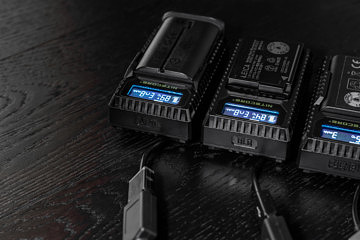
I can still hear the mockery when Leica introduced the first Leica Monochrom. Many of the comments stated that Leica was crazy to introduce a black and white only camera. Well, not crazy enough, because surprisingly many photographers did embrace the camera, to the extent that a second version has been on the market for a while already.

Unlike conventional digital sensors, the Leica Monochrom does away with the Bayer filter. This way the sensor allows all available light to be captured unaltered and unobstructed and thus focus purely on capturing absolute detail, luminance values and subtle tonal beauty. The result is black and white images with a quality unobtainable with conventional digital sensors.
As crazy as this idea might have seemed to some, Leica obviously had the right idea. For several years the Leica Monochrom was the only camera that offered this extra step to ultimate quality black and white digital photography. This was underlined solidly when Phase One introduced a monochromatic sensor of their own, the IQ3 100MP Achromatic interchangeable back. Just like Leica they took the same approach by eliminating the Bayer filter to obtain strictly black and white images.
As with all of Phase One’s cameras and digital backs, this is a medium format sensor, and while it has a higher resolution than the Leica Monochrom, at €50,000 it is also considerably more expensive. Taking that into consideration, the price of the current Leica Monochrom is almost cheap.
More of if you can't beat 'em, join 'em

As soon as the Leica SL was introduced, it was criticized for being a mirrorless camera, not a DSLR. The thoughts were that mirrorless cameras were for advanced amateur photographers at best, that professionals demanded a DSLR. Along with that came “opinions” that the camera was way too big. That was dispelled rather quickly when size comparisons showed that the Leica SL was effectively noticeably smaller than the top model DSLRs from Canon and Nikon, especially the camera body but also when equipped with similar lenses.

Since then the Leica SL has proven itself many times over. Leica has definitely shown with this camera that a professional caliber mirrorless camera can be made.
The fact that professional caliber mirrorless cameras likely present the future of interchangeable lens cameras was further underlined when Hasselblad introduced a medium format mirrorless camera with interchangeable lenses, the Hasselblad X1D. This camera had been rumored about for a while, and many thought that it might be a derivative of a Sony or Fuji camera. But this camera was entirely designed by Hasselblad and it is handmade in Sweden like its famous predecessors.

Hasselblad X1D
Similar to the Leica S line of medium format cameras with their sensor size of 30 x 45mm, the Hasselblad X1D uses a sensor of 33 x44mm in size which allows both cameras to be the size of a conventional full format sensor camera rather than the common medium format digital cameras which are substantially larger. The success of this approach has been clearly shown by the Leica S cameras and the new Hasselblad is very well on its way of being a formidable competitor.
After the fiasco with the rebadged Sony cameras, Hasselblad has rejoined the camera market with an interesting new product, one that does not rely on their previous film cameras. The advantages are obvious.
Another new entry into the mirrorless professional camera market is the Fujifilm GFX 50S. Similar to the Hasselblad, it features a 43.8 x 32.9mm CMOS sensor. The design of the camera simulates a DSLR which makes it a bit larger and heavier than the Hasselblad, but all three of these miorrorless cameras are similar in size and weight. However, the electronic viewfinder of the Leica SL has still by far the highest resolution of any on the market.
Fujifilm GFX 50S
The latest newcomers to the field of mirrorless cameras were just recently introduced by Canon and Nikon. Nikon was first with the Nikon Z6 and the Z7, followed soon after by the Canon with the Canon EOS R.



So it seems that the initial criticism of the Leica SL was indeed premature. Sales figures in general have shown that the only market that has shown definite growth is that of mirrorless cameras. While not considered a typical mirrorless camera as such, the Leica M line of cameras must be included in those figures as well.

Nikon Z6

Nikon Z7

Canon EOS R
So it seems that the initial criticism of the Leica SL was indeed premature. Sales figures in general have shown that the only market that has shown definite growth is that of mirrorless cameras. While not considered a typical mirrorless camera as such, the Leica M line of cameras must be included in those figures as well.
Even though Leica is considered by many as being stuck in their history of rangefinder cameras, it should be obvious to anyone by now that Leica is still capable of developing products that are clearly at the forefront of what is possible today and even their M camera line has proven to be able to compete with virtually anything on the market.
But any camera can only perform as well as its lenses allow it to do. As of late, Leica has introduced several lenses that are substantially ahead in performance of anything their competitors have to offer. When it comes to the lenses for any of their cameras, Leica has proven to still be the market leader. It is still the case that nobody is able to beat the manufacturing process and the extremely tight tolerances as applied by Leica. Anyone looking for the best that photography has to offer cannot ignore Leica.
























0 nhận xét:
Đăng nhận xét